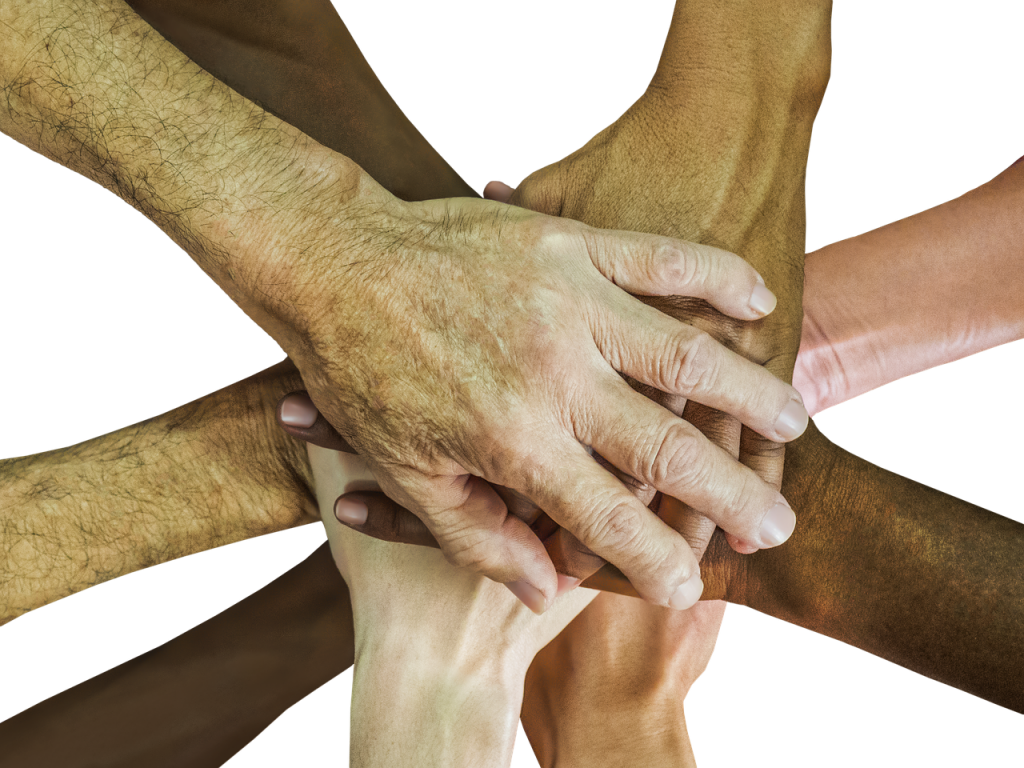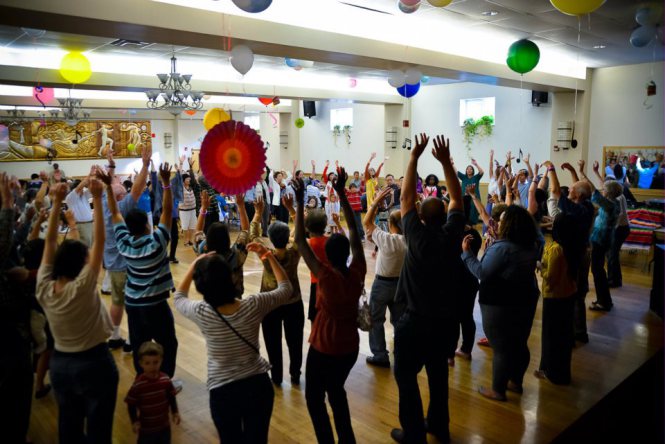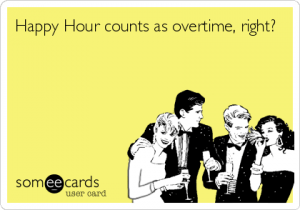 Around this time of the year, as I drive by the houses lit up with holiday lights, I think about Mr. Farnon and his family. It was about this time during the year when my family and I first arrived to the US, to Philadelphia. This was after a half-year stint at a refugee camps in the Philippines, where the adults were talking so much about how awful the communists in Vietnam were that I slept with a stick under my pillow to fend off any communists who tried to attack us at night. They were sneaky like that, those communists.
Around this time of the year, as I drive by the houses lit up with holiday lights, I think about Mr. Farnon and his family. It was about this time during the year when my family and I first arrived to the US, to Philadelphia. This was after a half-year stint at a refugee camps in the Philippines, where the adults were talking so much about how awful the communists in Vietnam were that I slept with a stick under my pillow to fend off any communists who tried to attack us at night. They were sneaky like that, those communists.
Life in Philly was wonderful, and by wonderful, I mean difficult. None of us spoke much English, and everything was new and strange. I remember going grocery shopping and being amazed by the aisles, how clean they were, and how there was not a single chicken running around, tracking mud everywhere and weaving between cheerful women who were hacking away at fish or bamboo shoots on giant tables under the pale glow of dirty and worn blue tarp.
School was pretty rough too. I was eight. Each morning I woke up dreading the day. I would watch Care Bears and The Thundercats, getting sadder and sadder as the shows reached their conclusions and I would have to leave my mother and walk in the freezing cold to the bus stop to be taken to a place where I didn’t understand anything. My mother gave me two quarters one day. At recess a group of children asked if I wanted to go buy some snacks. “How much do you have?” they asked, or at least that’s what I thought they were saying. I pulled out the quarters. “50 cents?” they laughed, “that’s all you have?” I remember feeling the shame of having only two quarters and wishing desperately that my mother had given me a whole dollar. A whole dollar would have solved all my problems.
I was anxious to get home each day, because everything was overwhelming at school, with the tests and the homework that I didn’t understand, and the kids who had stickers to show off and I had none. But it was also because I wanted to open the fridge and see if my water had turned into ice. In Vietnam, only very rich people had refrigerators, small ones, so the fact that we had a giant one in our house was astounding. Ice was a treat you could only get when your dad takes you out to a café. I left water in various bowls, hoping to make some ice, and came home disappointed to find only a thin layer had formed on the surface.
A couple of months after we arrived, it got very cold, and at night some of the houses lit up with colorful lights. We had never seen so many lights before. They made the cold, empty streets seem so much more inviting. My two brothers and I were walking around the block when we found a string of lights someone left in a trash pile on the curb. We dragged it home, taped it to the wall, and plugged it in. Magically, most of the bulbs lit up, and it was the most beautiful thing we had ever seen. They were our very own colorful lights, and we kids, aged 12, 8, and 5, would spend hours staring at them.
The hardest part about being in a new world was the community we lost. All my friends were gone, along with my teachers and neighbors and aunts and uncles and cousins. The women who sold fish and vegetables at the market were my mother’s friends, and now she didn’t have anyone to talk to. Our new neighbors would wave to us once a while when they saw us, but otherwise we were in our house, trying to make ice or plugging and unplugging our awesome one string of Christmas lights.
Around this time, a family “adopted” us. Mr. Farnon and his wife and daughters, probably through a program organized by their church or a nonprofit, came to visit us, bringing food and pots and pans and other useful things. Mr. Farnon was in his 50’s, and he and his family were the bridge to our fascinating new world. One day they came to pick us up, dressed up all nice. They took us to a restaurant that served these giant, flat cakes covered with sliced meat and vegetables and some gooey melted rubber-like substance. This was our first pizza, and it was difficult to swallow, but we knew Mr. Farnon was proud to show us this aspect of American culture, so we tried to eat as much as we could and to be appreciative. We couldn’t finish, though, since the gooey cheese was much too rich, and Mr. Farnon insisted we take the leftovers home.
After pizza, the Farnons took us to see the Nutcracker. I grew up in a little mountain village surrounded by red earth and pine trees, where kids make boats from banana leaves and float them down the rivulets that appeared after the monsoon rains. The music and costumes and colors and grandeur of the Nutcracker were so foreign, so spectacular, so I promptly fell asleep.
It was a strange and unforgettable evening, with the pizza and the ballet, but we were anxious to get home. Mr. Farnon escorted us inside, where he placed the leftover pizzas in the fridge. “What is this?” he asked me, pointing at my different containers filled with water. “I make ice,” I said. He laughed. He opened the freezer, which was above my head so I never paid much attention to it. “You need to put the water in here,” he said, and that changed my world. I got even more anxious to get home each day, and sometimes I couldn’t sleep, so excited and happy I was that I could now make actual ice.
After six months in Philly, we moved to Seattle. During those months, Mr. Farnon continued to visit regularly, always thoughtful and trying to help us in whatever ways he can, connecting with us through simple words and pantomimes. They brought us warm clothing, which we would need when we encountered our very first snow in life. Vietnam is a tropical country, and most people will never see snow in their lifetime. Like being able to come to America, snow is something they only see in movies and something to dream about.
After we left, my father would continue to write to Mr. Farnon in his broken English, updating him on our journey across the US. At Dad’s insistence years later, I wrote to him to thank him for all the help he gave our family, and to tell him that we kids were doing fine, that we were in college. I told him I liked pizza now, and that I thought of him and his family each time I have a slice, or whenever I fall asleep at the ballet. After a few years of communications with my father, Mr. Farnon stopped writing. We never knew why.
Each year around this time, I remember our first few months in the US, how new and overwhelming and wonderful and scary everything was. And I remember the kindness Mr. Farnon and his family provided us. This kindness was one of the things that spurred me to go into nonprofit work. It made me realize the importance of community, and how building community is one of the most critical services we provide our clients.
This sense of community is something we don’t talk about often. It is too fluffy to be an actual outcome that anyone would fund. We talk about how many kids we help to graduate, or how many hot meals we provide, or how many jobs or affordable homes we help people find. But we nonprofits should be proud that we also provide community and a sense of belonging. Our clients come to our programs to get help with their homework or food for their family or whatever other services we offer. But they also come because if we do a good job, we help them feel that they are part of a community that cares about them. For those who have lost their community like my family and I did when the War forced us to leave our homeland, it is like we are water floating around, and community is a container to hold us so that we can gain strength and become solid in a beautiful but at-first cold new world. This service of building and strengthening community, as nebulous and difficult to measure as it is, cannot be undervalued. It is one of the most critical and noble things we do nonprofits do.
I recently googled Mr. Farnon and found his obituary. He died 5 years ago. As I drive around and see all the lights on the houses, I think of him and take a moment to be grateful for all that he and his family did for us. They brought us food and clothing and helped my parents find work and exposed us to new foods and cultural experiences. But most importantly, they made us realize that just because we left our community behind in Vietnam, it does not mean that we can’t have an equally caring one here.




